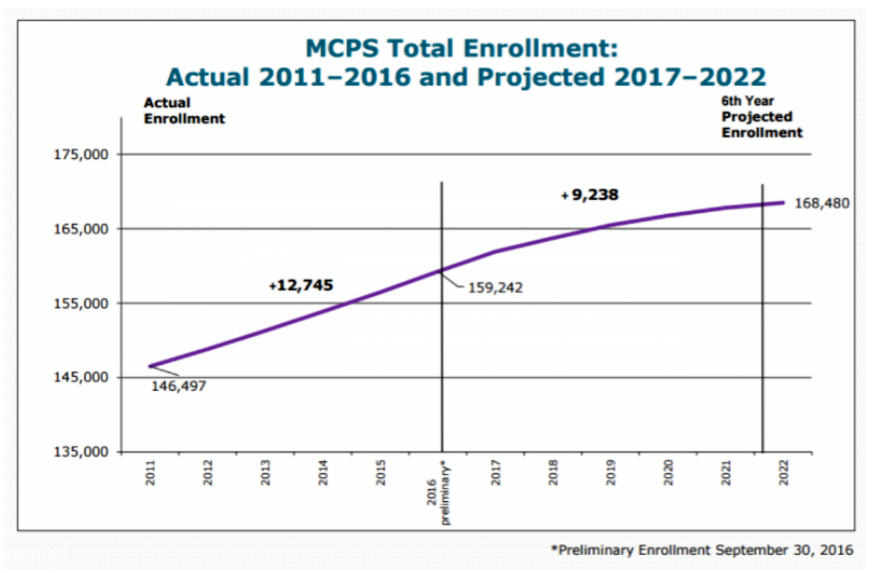MCPS redistricting considered to quell inequity issues
MCPS total enrollment is predicted to rise to 168,480 students by 2022. Redistricting will resolve this issue.
May 8, 2019
Montgomery County Public Schools such as WCHS have consistently ranked among the best in the country and are growing at high speeds, though a great divide exists between schools in wealthy areas and schools in less wealthy ones. Recently, this divide has sparked debate over whether or not Montgomery County school district boundaries should be redrawn in order to help this issue.
MCPS is planning to construct more classrooms at schools that do not already have enough resources, instead of making small boundary changes to allow less-populated schools to absorb new students. The solution to this debate can be found in researching and observing the details.
MCPS is the largest school district in Md. and the 17th largest out of about 15,000 in U.S. In 2016-2017, MCPS made up 40% of school population growth in Md. With the consistent growth patterns shown, MCPS’s achievement gap is slowly but surely increasing.
MCPS has 133 elementary schools and a stated policy for a preferred range of enrollment of 450-750 students per school, which translates to a preferred enrollment of approximately 75-125 students per grade for a normal K-5 school. There are currently 28 elementary schools with more than 125 students per grade and 26 elementary schools with fewer than 75 students per grade. Overpopulation of schools is part of the problem, as schools with higher populations have less resources to supply and efficiently take care of their students.
The idea for the boundary study resolution came from conversations between the MCPS 2018-2019 Student Member of the Board (SMOB) Ananya Tadikonda, and a growing number of student activists who are concerned about diversity and inequality within their schools. Those students as well as leaders from student governments and various MCPS programs are forcing a debate about school boundary lines, de facto school segregation and the opportunity gap between low income students, students of color and their wealthy peers.
According to a Greater Greater Washington April 2019 article, evidence has found that schools with less wealth tend to be bigger, don’t have enough resources and have lower test scores.
Much of the research found on school outcomes tends to focus on closing the school achievement gap for different races, ethnicities and socioeconomic groups. Supporters of redistricting argue that this will allow students on both ends of the wealth spectrum to be in a classroom together, thus coming closer to closing the achievement gap in MCPS schools.
However, critics of this idea see the resolution as a threat to the value of their biggest investment — their home, often purchased because it’s zoned for a particular school. Others don’t want their school communities broken up as a result of this.
“I do not support the boundary changes. I think there are better methods of closing the achievemtn gap then placing the ‘higher perfoming’ students across the county,” senior Melissa* said. “That helps make the scores look better on paper but in reality it helps no one.”
MCPS recently put forward its 2019 fiscal year capital budget and its fiscal year 2019-2024 Capital Improvements Program (CIP). According to the MCPS website, the CIP includes current and projected school enrollments and capacities, and an assessment of space availability at all schools. Data has shown that MCPS does not have enough room in their budget to be able to properly supply these schools with higher poverty rates, thus leaving many to argue for redistricting.
Though the topic has sparked controversy regarding finding solutions, ultimately, it is a serious problem at stake. The possibility of redistricting can affect hundreds and thousands of MCPS students, many of which could be from WCHS.
“The claim that WCHS is the way it is because of funding and more attention from the county officials is extremely crazy to me,” Melissa* said. “I believe a tangible way for our county to reach the level it wants is by simply involving the parents.”


